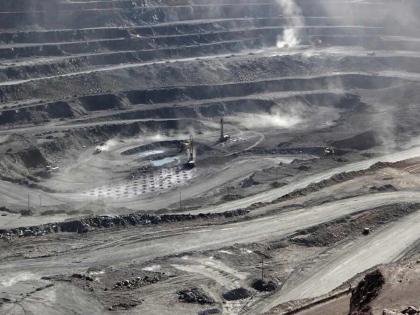Rare Earth Minerals Conundrum
By Vijay Darda | Updated: October 27, 2025 06:08 IST2025-10-27T06:07:17+5:302025-10-27T06:08:28+5:30
India has third-largest reserves, yet why do we import 97% of our requirement from China?

Rare Earth Minerals Conundrum
If we also acquire safe technology, we too can achieve remarkable results in the field of rare earth minerals.
When the news broke that China had decided to disrupt the supply of rare earth minerals, it created a global stir. The immediate question on everyone’s mind was: What will happen next? Is the world really at China’s mercy? These thoughts come to mind and demand an answer, so in this column let’s discuss the rare earth minerals that have so shaken the world.
Rare earth minerals are, in fact, a scientific subject, but let’s try to understand them at a general level and appreciate the story behind them. Of all the elements that science has discovered and studied so far, 17 elements are called rare earth minerals. These are: Lanthanum, Cerium, Praseodymium, Neodymium, Promethium, Samarium, Europium, Gadolinium, Terbium, Dysprosium, Holmium, Erbium, Thulium, Ytterbium, Lutetium, Scandium, and Yttrium. These minerals are used in mobile phones, laptops, TV screens, computer hard drives, memory cards, as well as solar panels, wind turbines, and batteries and motors for hybrid and electric vehicles. Beyond that, they are used in guided missiles, radar systems, jet engines, and other defence technologies, as well as in MRI machines and other medical equipment. In short, these 17 elements have come to become the most essential part of modern life. But the most important point is that these so-called “rare earth minerals” are not really rare. The Earth has abundant reserves of them. So why are they called rare? We will discuss that shortly. But first, it may surprise and make you proud to know that according to the latest report by the United States Geological Survey, in terms of the availability of some rare earth minerals, India ranks third in the world. Yet, we obtain nearly 97% of our rare earth minerals from China. Before understanding the reason for this, let’s see, according to the latest USGS report, which countries have how much rare earth minerals. China alone has the largest reserve in the world, approximately 44 million metric tons. In second place is Brazil, with 21 million metric tons. India is third, with 6.9 million metric tons, followed by Australia with 5.7 million metric tons, Russia with 3.8 million metric tons, and then the United States with 1.9 million metric tons of rare earth minerals.
The remarkable characteristic of rare earth minerals is that they possess high magnetic fields, light-emitting properties, high melting points, high boiling points, and high electrical and thermal conductivity, which make them extremely versatile. China realised a long time ago that rare earth minerals would be the greatest resource of the future. As a result, it developed advanced mining and processing technologies. China alone accounts for 70% of mining and about 90% of processing of the world’s rare earth minerals. Even India, which mines some of these minerals, sends them to China for processing.
Mining rare earth minerals is inherently difficult and expensive. These minerals are often mixed with highly radioactive elements such as uranium and thorium, which means mining them requires extreme expertise. Without proper skill, radiation exposure can pose a serious threat not only to the workers but also to nearby populations.
As far as India is concerned, we lack cutting-edge technology. We remain dependent on countries like Australia and Sweden for mining technology. However, our scientists have been working dedicatedly, and soon we can expect to achieve the necessary expertise. To this end, India has launched the “National Critical Mineral Mission”, under which 30 major mineral reserves are to be identified by 2031. If we succeed in proper resource extraction and processing, India can become self-reliant.
In the current global scenario, relying on China for rare earth minerals is akin to axing one’s own foot. This is not the first time China has disrupted the supply. In 2010, China had stopped supplying rare earth minerals to Japan, the United States, and European countries. Recently, China has again imposed export restrictions, which have seriously affected smartphones, military equipment, and green energy projects. This is why the United States is scrambling for rare earth minerals. The deal the US hastily struck with Australia is largely about securing these minerals. This is also the reason why US President Donald Trump finds Greenland attractive where there is a strong possibility finding abundant rare earth minerals. The area of Ukraine captured by Russia also contains significant deposits. These 17 elements of the periodic table have indeed caused a global upheaval. Whoever controls rare earth minerals will be wealthy and powerful. For now, the heart says…
“Tu na rah mere liye durlabh /
Tu meri khwahishon mein hai,
Tu chahat hai meri /
Aur tu hi tamanna hai meri!”
(You are not rare to me /
You are in my desires,
You are my wish /
And you alone are my longing!)
And finally:
Last week in the United States, there were more than 2,600 protests against Donald Trump, with 7 million participants. This was unprecedented; no previous U.S. president had faced such massive demonstrations. Yet how did Trump -- considered the world’s most powerful leader -- respond? He created an AI video showing himself throwing dirt on the protesters. Does this suit him? Perhaps Trump is afraid of the Congress, but in his attempt to appear brave, he has acted in this way! Who will give him sound advice?
The author is the chairman, Editorial Board of Lokmat Media and former member of Rajya Sabha.